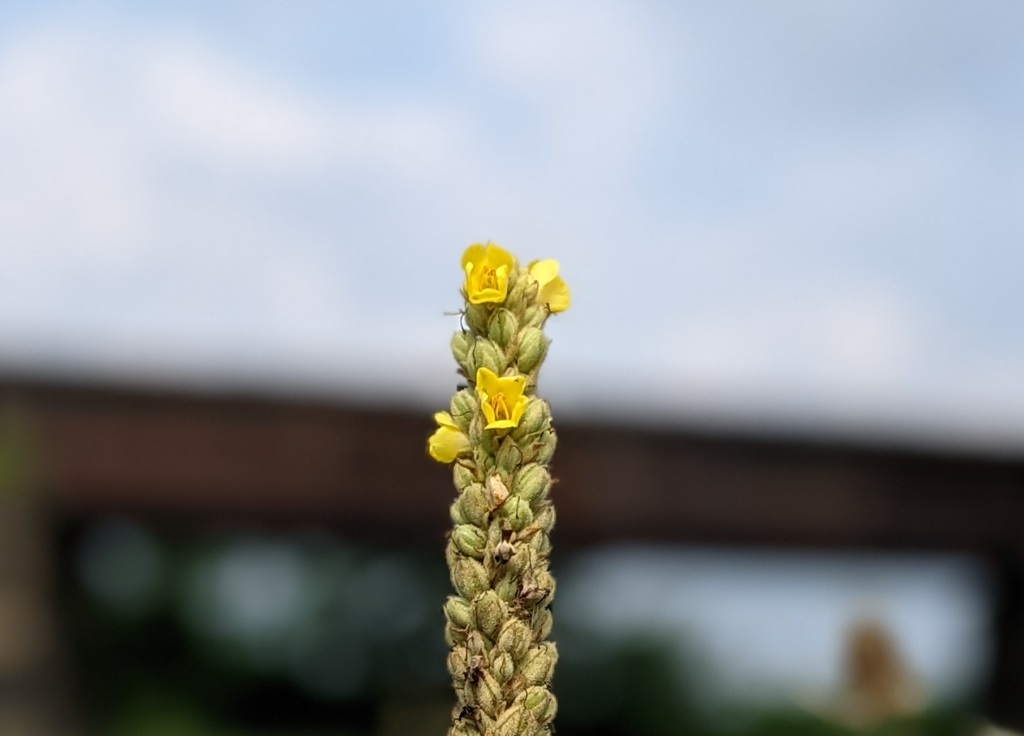
24 June 2023
Two kinds of mullein are blooming now in western Pennsylvania. Both are native to Eurasia and northern Africa and are listed as invasive in some states, but not in Pennsylvania.
Common mullein (Verbascum thapsus) is hard to miss in late June, standing 5-6 feet tall with a spike of yellow flowers. This hairy biennial plant spends its first year as a rosette of fuzzy basal leaves, similar to the early stage of lamb’s-ear.
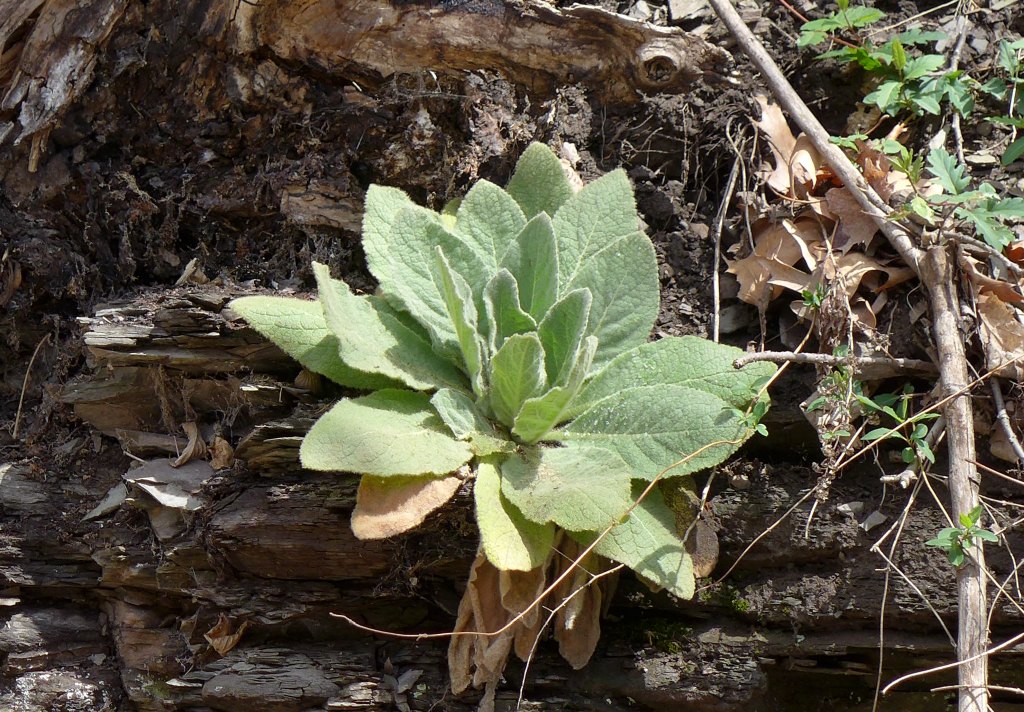
In the second year it sends up a tall shoot topped by a flower spike.
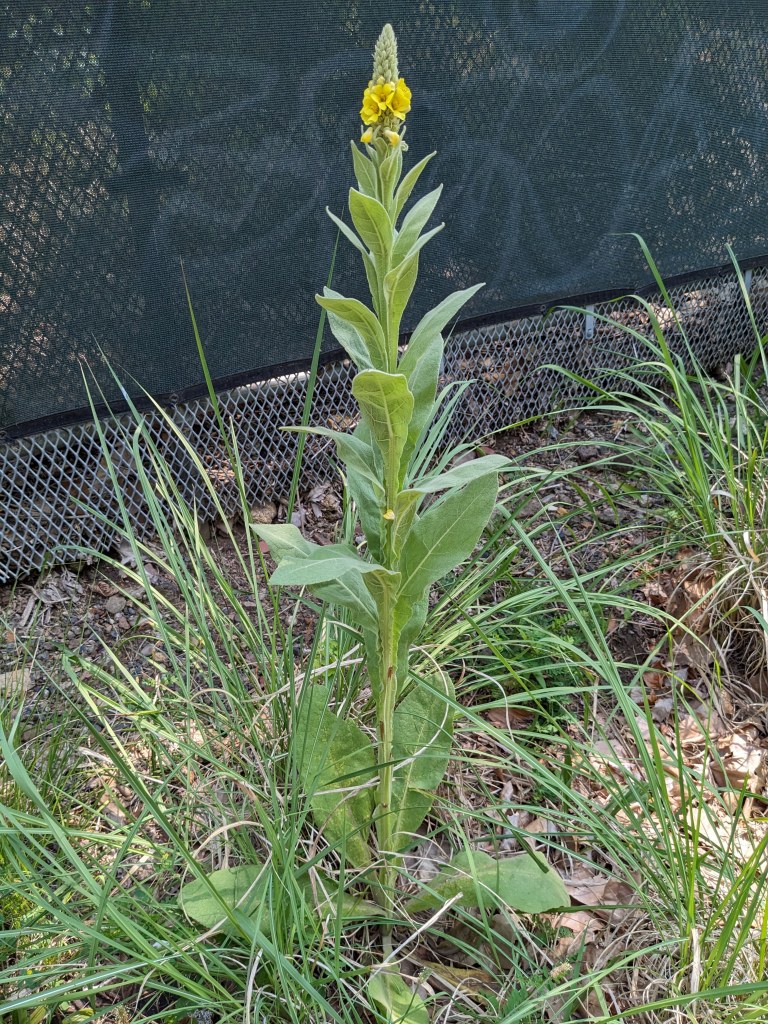
As the spikes go to seed in late July you can see why people used these plants as torches.
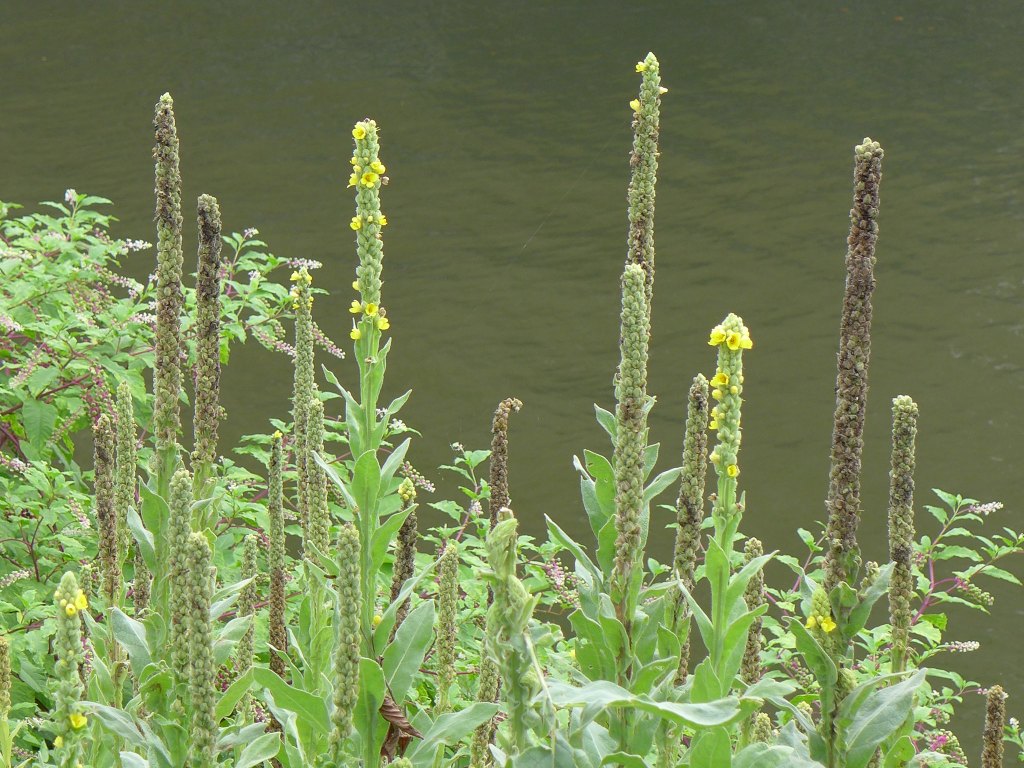
Moth mullein (Verbascum blattaria), like common mullein, is also biennial but its flowers are prettier and more delicate.
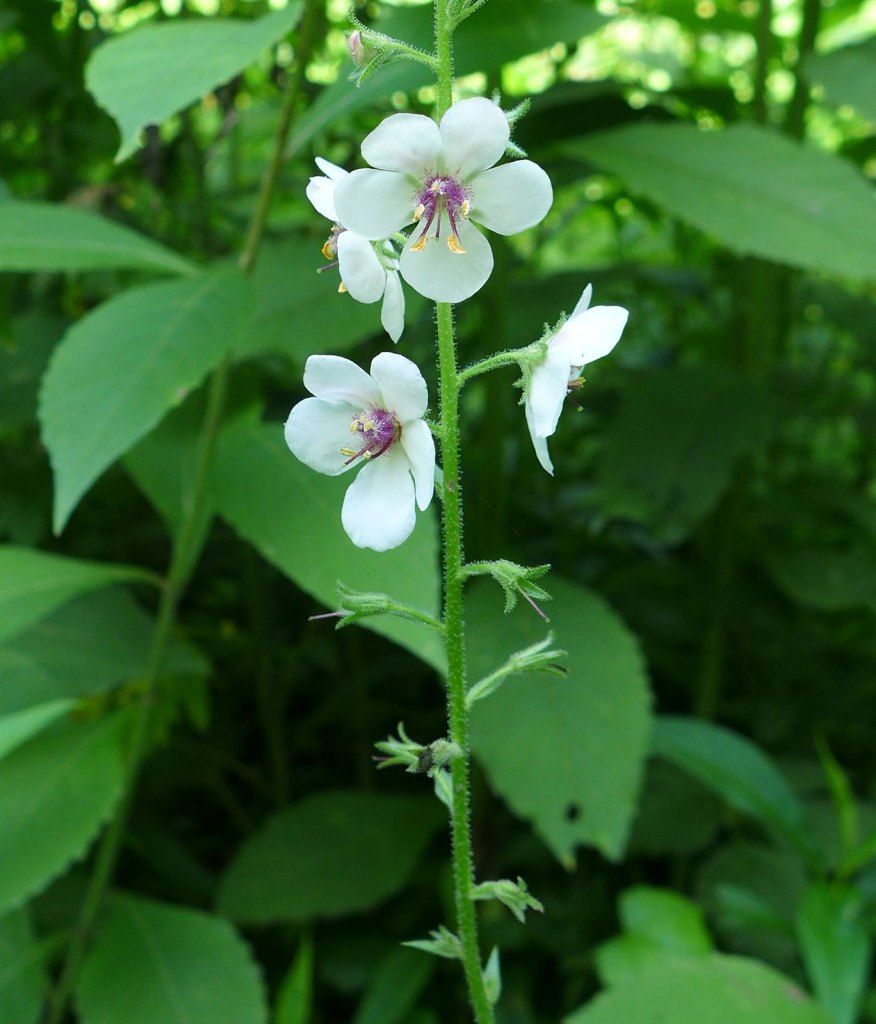
The basal leaves are hardly noticeable because the flowers draw so much attention.
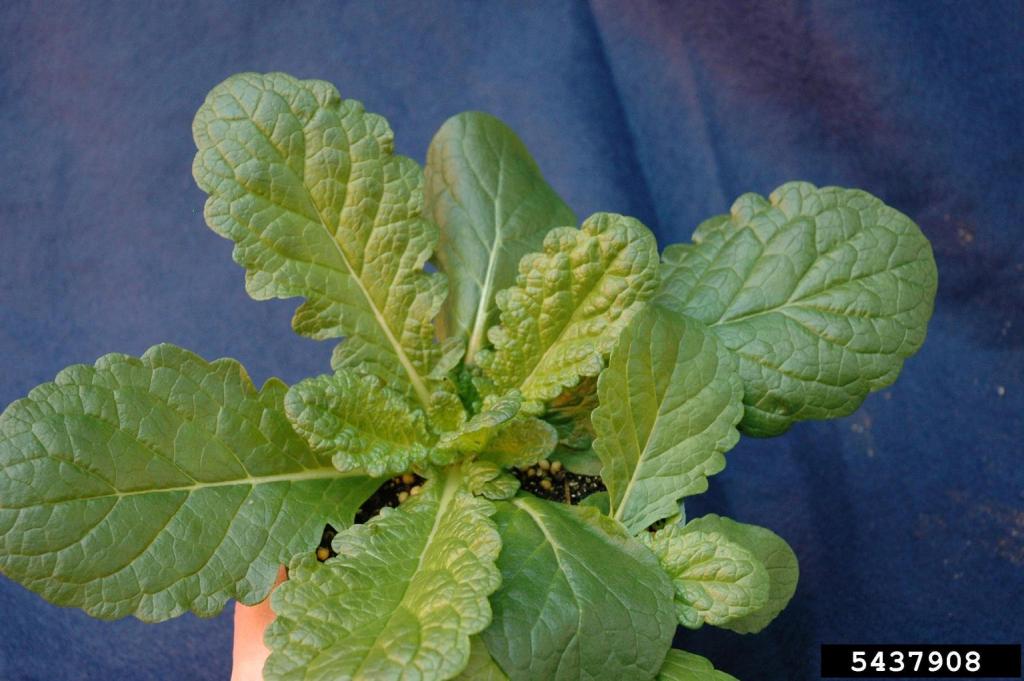
The plant blooms from the bottom up …
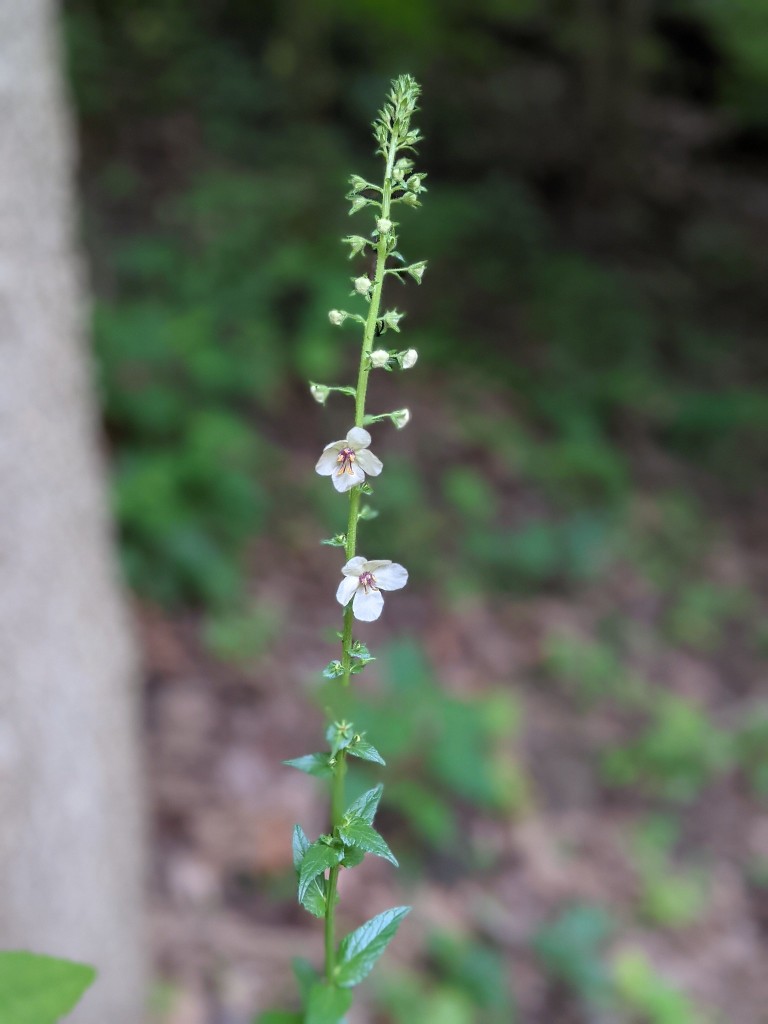
… and goes to seed in the same direction. Each seed pod looks like a ball with a string on top.
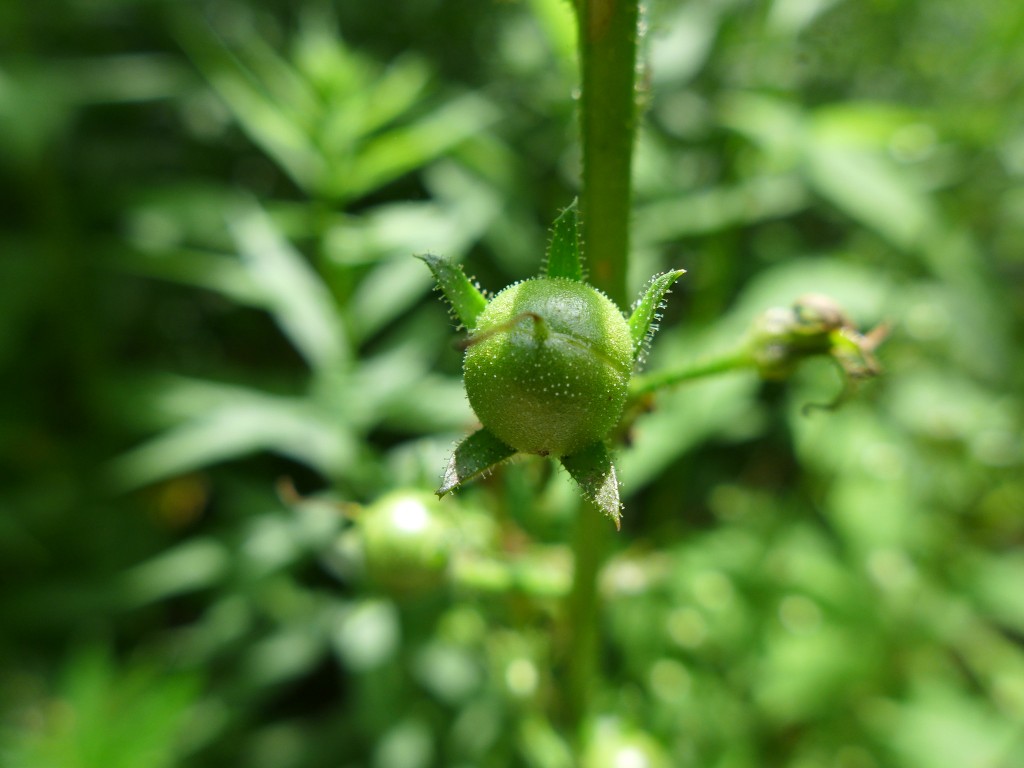
Other than its beauty, moth mullein has an unexpected benefit. According to Wikipedia, it has “long been known to be an effective cockroach repellent, and it’s species name blattaria is actually derived from the Latin word for cockroach, blatta.”
Torches and cockroach repellent. Something to think of when you see these two mulleins.
(photo credits are in the captions)
Another wonderful lesson about something I knew nothing! Kate, you keep this old brain of mine active and I thank you!!
Nice article. Still think you should write a book(s)similar to Marsha Bontas seasonal essays.
Mullein also has anti-inflammatory
properties and can be used as a tea. My husband brews some for me when I get a migraine and it actually helps me.
I use Mullein in a liquid form. It helps to bring releif from a coughI’ve had for a few weeks.
Very interesting! Mullein is really helpful, especially when it comes to cough. I also recently read about differences between mullein’s leaves, roots and flowers
[EDITED] LINK INSERTED FROM CLEVELAND CLINIC PRIOR TO PRODUCT SALES SITE: https://health.clevelandclinic.org/mullein-benefits
.
It’s very useful to know how to use the power of nature to help yourself.
https://nutra-harmony.com/blogs/news/mullein-extract-for-respiratory-health-reviews-studies-and-dosage-tips